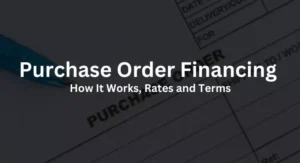
Growing businesses recruit new hires who need training, onboarding, and integration. Employers should try to add new team members with the necessary abilities and capabilities. An efficient training programme aids in the complete integration of these talented new hires and equips them with the skills necessary for success and career advancement.
We’ll go through the requirements for an efficient new-hire training programme and discuss how to develop new hires into outstanding team members.
Also Read: Workforce Software Monday: Complete Review
How to develop an effective new-hire training plan
These five tips can help you develop a new-hire training plan that will get employees settled and ready to produce top-quality work.
1. Ask existing employees what you should include in the training.
The best way to develop a new-hire training plan is by consulting with current employees who excel in their roles. For the best results, follow these steps:
Identify key employees.
Identify outstanding workers who are now holding roles that are comparable to the new hire’s.
Find out what the job really entails
Ask your present staff what they believe the new team member will need to carry out their regular responsibilities. This guidance might assist you in avoiding forgetting important work specifics, such as the equipment and setup required for the new employee to be successful.
Have them evaluate their training.
Your seasoned staff may assist you in identifying training plan holes that they have encountered. Ask them what they would have liked to know on the first day of work that would have made it simpler to get started.
According to Matthew Daily, managing director of Tiger Financial, “establishing a new-hire training programme might be difficult.” “You need to consider both the most crucial aspects of the task and the tiniest elements that they will need to master. The easiest method to find out what new hires must do is to ask your current workforce. They will make sure you are aware of every aspect of the position and how to prepare them for it.
2. Make training flexible, task-oriented and ongoing.
Specify the following characteristics for your dynamic process:
Customized training for each employee.
While all new-hire training programmes should go through the fundamentals of working for your firm, it’s crucial to include particular components for each employee depending on their professional history and interview. According to Adam Korbl, founder and CEO of iFax, “Each person will enter training with varying skills and different focuses on what they need to be able to get through the training process successfully.” As a result, while the fundamentals are core features, the rest of the training should remain adaptable to suit each individual based on their personal needs.
Incorporate task-oriented training.
To advance toward full employment, each training item must be done to a certain standard rather than having a certain amount of time allotted for it, said Korbl. This gives each individual the freedom to get the training they truly need rather than just the minimum requirements.
Make training an ongoing process.
Each new recruit should be able to execute their work within a week or two, but training should continue throughout their employment, with frequent check-ins to make sure they have all they need to succeed in their role.
3. Encourage team-level training.
To make sure new hires are in line with the organization’s goal and vision, the majority of businesses recruit for cultural fit. But all too often, training just addresses fundamental standards and clerical details like pay and benefits for employees. Instead than relying only on corporate-level training, new recruits may learn more quickly and integrate into the workplace culture by participating in team-based training.
According to Mark A. Herschberg, author of The Career Toolkit: Essential Skills for Success That No One Taught You, “Companies often undertake onboarding on orientation at the corporate level” (Conosco Media, 2020). While helpful, doing orientation at the team level also helps. Equally crucial is assisting the new team member in comprehending the culture of the group. What is the team’s preferred method of communication or how does the team handle conflict?
Team-level training can help new hires do the following:
- Understand their team’s unique workflow
- Recognize the team’s reporting hierarchy
- Appreciate the day-to-day expectations for their role
- Understand existing processes
- Meet other team members
- Learn the metrics used to track the team’s productivity
4. Take into account the desired teaching style of each new recruit.
Your new-hire training programme should take into account the many ways that people learn. A new hire’s requirement for training to execute their job well may be reduced by adapting to their chosen learning style.
According to Jase Rodley, founder and SEO service provider at Dialed Labs, it’s crucial to engage new hires in training in a manner that maximizes their capacity to learn. People often have different perspectives on how to approach a situation.
Your new-hire training programme should take into account the many ways that people learn. A new hire’s requirement for training to execute their job well may be reduced by adapting to their chosen learning style.
According to Jase Rodley, founder and SEO service provider at Dialed Labs, it’s crucial to engage new hires in training in a manner that maximizes their capacity to learn. People often have different perspectives on how to approach a situation.
Three primary learning styles are most often seen among new employees:
Visual.
Some new employees prefer to learn procedures by seeing others in action.
Hands-on.
Before they can memorise a job, some workers want to do it repeatedly themselves as a hands-on method of learning.
Reading.
In their first few weeks on the job, some workers choose to go through a package of printed instructions that they have on hand.
The best way to offer a new employee the greatest chance of success is to use the approach that most motivates them, according to Rodley, even if not all components of training are designed to transition between [these three learning styles].
5. Promote good leaders and involve them in the training process.
Your team won’t be successful without capable leaders. This is particularly valid for recent employees. Make sure you thoroughly assess which individuals would be the greatest at directing and mentoring other workers when promoting or recruiting for management jobs. After that, include them in creating and carrying out your new hire training programme.
According to Jessica Donahue, owner of Adjunct Leadership Consulting, “the leadership quality of the manager is the No. 1 deciding factor of whether a new recruit would have a favourable or bad employee experience over the long haul.” The calibre of the leader an employee reports to may be used to predict employee engagement, retention, and turnover. To retain and engage a high-performing team for years to come, a leader must start by offering an extraordinary onboarding experience.
What is a new-hire training plan?
A company’s well-defined procedure for integrating and acclimating new team members is called a new-hire training plan. It must carry out the following:
Cover administrative concerns.
Ensure that all required administrative documentation is completed by new team members.
Introduce new hires to their teams.
Share the procedures for interacting with coworkers and leadership with your new recruits and introduce them to team members.
Teach critical tools.
Introduce new recruits to the software and other resources they’ll need to do their tasks well.
Share the company vision.
Introduce the company’s goal, organisational structure, and culture to new recruits as well as other fundamental principles.
Why is new-hire training important?
Your business may benefit from a thorough new-hire training programme in the following ways:
Ensures a strong start.
A thorough training programme may avoid misunderstandings or a slow start, allowing the business to profit from filling a vacancy as soon as one week after the new recruit starts in their job.
Helps employees feel welcome.
Making new hires feel like team members is made easier with the aid of an extensive new-hire training programme. They will get to know important corporate players, discover the benefits of the position, and locate resources for help inside the business.
Makes employees feel confident.
While providing new team members with the information, resources, and skills they need to succeed and contribute to your organisation, training also helps them feel at ease in their roles.
Improves morale and reduces turnover.
Since good employee morale reduces turnover, it may also increase morale since it makes new workers feel like valued, capable team members. In contrast, new hires who aren’t properly trained could become dissatisfied and quit their employment right away.
Training mistakes to avoid
To assist develop the finest onboarding programme possible, avoid these typical training programme errors:
Not giving new hires a warm welcome.
Your initial image of the organisation will be shaped by how you welcome new employees. Even their long-term productivity may be impacted. If you lead them to their desk, give them a task, and let them figure out the firm on their own, you’ll come out as cold and indifferent. Instead, a senior worker or your recruiting manager should welcome them inside. Introducing team members and giving new hires a tour of your facilities might make them feel more at home.
Using too much technical jargon.
Although many sectors have created their own slang, you shouldn’t assume a new employee is familiar with it. Give new workers tools to learn the industry jargon at their own speed and take your time teaching them to it. Give them a cheat sheet with widely used abbreviations and phrases, or put them in touch with an internal mentor who can clarify any words they don’t understand.
Failing to nurture their interests.
It is feasible to capitalize on the enthusiasm of many new workers in order to establish a strong relationship with the business. But just when a relationship exists doesn’t guarantee that it will last. Without direction, a new employee’s enthusiasm for their job may wane, and with it, their productivity. It’s essential to communicate to keep a new hire’s enthusiasm high. A manager or member of HR should follow up with the new recruit on a frequent basis to make sure they are not having any issues. Make sure they are aware of their duties, and reveal exciting ideas.
Turn your new hires into top-quality employees
Many of the top workers in any field are created, not born. However, it takes much effort and commitment to develop a new recruit who hasn’t yet been tried into a worker who consistently delivers top-notch outcomes. This training programme guide may make all of that effort much simpler while also improving your team.







